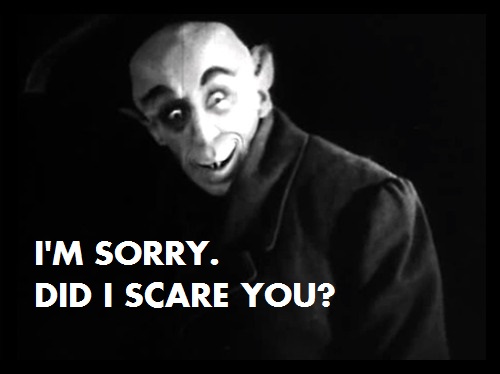Knowledge (it is commonly said) is power. And power (I have previously said) is what horror is all about.
The more you know about a threat, the more power you have. The more power you have, the less frightening it is. That’s why unseen, mysterious monsters are so scary: because we have no knowledge of them, we have no power — and there is nothing so terrifying as being powerless.
As creators of horror stories, we have all the knowledge and therefore all the power. (Of course we do! We’re the ones making this stuff up!) We determine how much knowledge the audience and the characters get to have — and can even take it away if we want to give them an extra jolt of fear. (“I was wrong about ritual! It’s not a binding, but a summoning! We have to get out of here now!“)
By managing the flow of information, we can adjust the characters’ power. Give them more when you want them to feel good (“We know the monster’s weakness! Let’s go kill it!”), and less when you want to raise tension and suspense. We must be careful not to withhold too much knowledge from the audience, however, or they will feel frustrated, rather than pleasurably scared. (This is doubly true when the audience and the characters are the same, such as in video games or tabletop RPGs.)
This is all well and good for individual stories. But what happens when you’re creating an entire storyworld? The audience carries over its knowledge from one story to all other stories in the world, thus making them that much less frightening. That’s a problem.
That, my friend, is the horror world paradox… and we’ll be tackling that in part 3.

